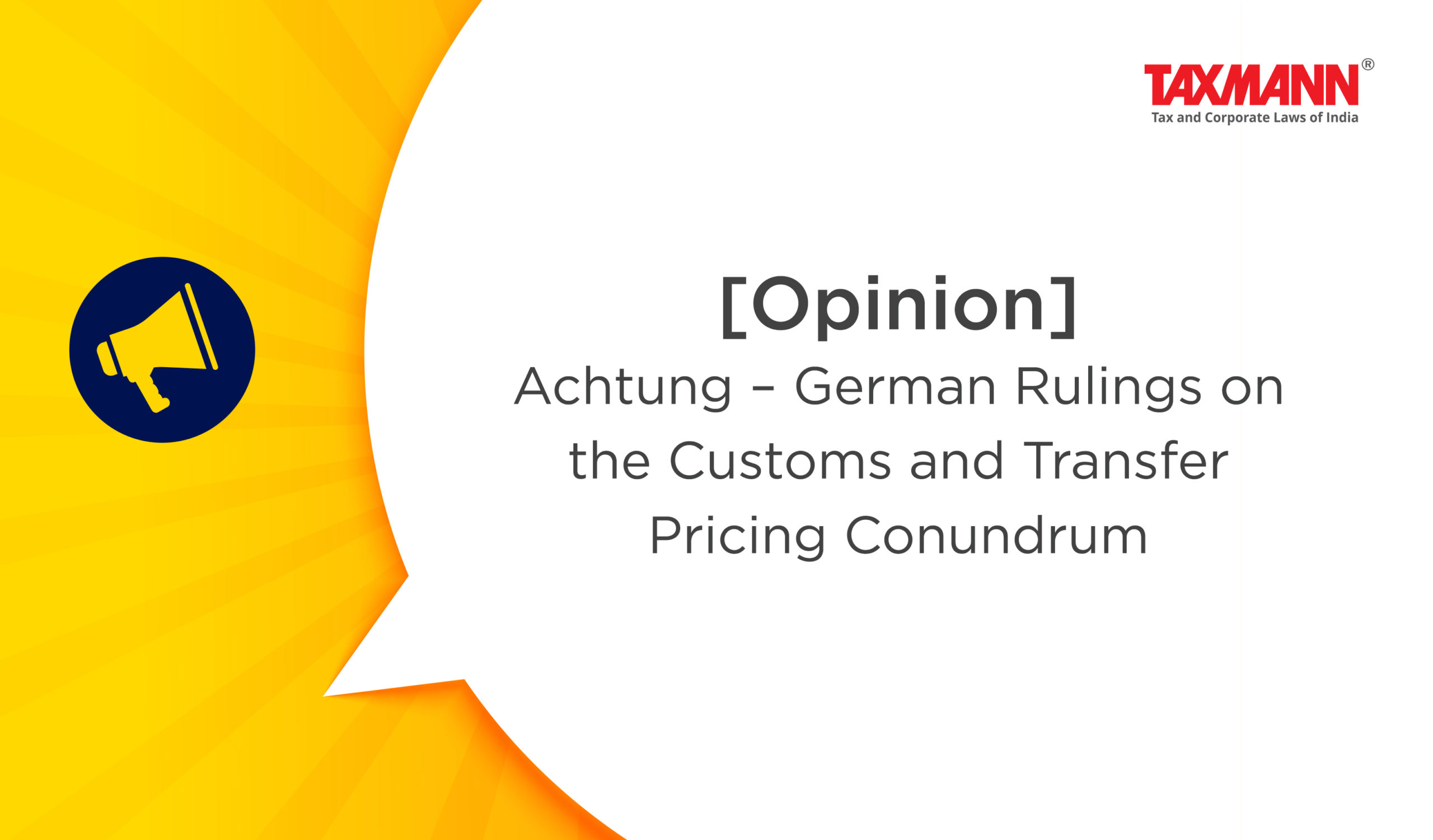[Opinion] Achtung – German Rulings on the Customs and Transfer Pricing Conundrum
- Blog|News|Transfer Pricing|
- 2 Min Read
- By Taxmann
- |
- Last Updated on 15 June, 2023
Amer Qureshi – [2023] 151 taxmann.com 199 (Article)
Introduction
Intra-group trade within different cross border arms of multinational companies (MNCs) has increased exponentially over the past decades across the globe. This rapidly growing cross border trade within MNCs has made prices of goods traded amongst related entities, one of the most closely scrutinised areas for Revenue authorities. Whilst the primary objective of Customs valuation and Transfer Pricing (TP) methodologies has always been the same – to ensure that the price for cross border related party transactions is not in any way influenced owing to the relationship between the parties – there exists a dichotomy due to a contrary impact. On one hand, higher the import value of goods, higher would be the Customs duty collected; on the other hand, lower the import value of goods, lower would be the deduction available (i.e., higher would be the taxable income) to taxpayers for corporate income-tax purposes.
In the context of global supply chains of MNCs, Limited Risk Distributor (LRD) model – wherein the local related party distributor receives a targeted operating margin for its role – has become fairly common worldwide. To ensure that the targeted operating margin is achieved in a particular fiscal year, year-end TP adjustments (TPAs) to the import price of goods have also become commonplace. For testing the margins of such LRDs for compliance with local TP regulations, typically the Transactional Net Margin Method is adopted in the TP documentation (Local File).
This article deals with a couple of pertinent German case laws covering both scenarios – upward as well as downward year-end TPAs.
BFH Ruling
A German distributor of a Japanese parent company was importing goods from the Japanese parent entity and determined the Customs value based on the prices invoiced during the year using the transaction value method. In order to align the operating margin with the arm’s length level, year-end balancing payments were made, thereby resulting in a downward TP adjustment (illustrative example given below).
| Particulars for German distributor | Amount |
| Sales to third parties (A) | 100 |
| Cost of goods sold (B) | 80 |
| Gross profit (C=A-B) | 20 |
| Selling, general & administration expenses (D) | 30 |
| Operating profit/ loss (E=C-D) | -10 |
| Targeted arm’s length margin to be maintained (e.g., 2% on sales) (F) | 2 |
| TP adjustment done by way of reduction in import price of goods (G=E-F) | 12 |
Click Here To Read The Full Article
Disclaimer: The content/information published on the website is only for general information of the user and shall not be construed as legal advice. While the Taxmann has exercised reasonable efforts to ensure the veracity of information/content published, Taxmann shall be under no liability in any manner whatsoever for incorrect information, if any.

Taxmann Publications has a dedicated in-house Research & Editorial Team. This team consists of a team of Chartered Accountants, Company Secretaries, and Lawyers. This team works under the guidance and supervision of editor-in-chief Mr Rakesh Bhargava.
The Research and Editorial Team is responsible for developing reliable and accurate content for the readers. The team follows the six-sigma approach to achieve the benchmark of zero error in its publications and research platforms. The team ensures that the following publication guidelines are thoroughly followed while developing the content:
- The statutory material is obtained only from the authorized and reliable sources
- All the latest developments in the judicial and legislative fields are covered
- Prepare the analytical write-ups on current, controversial, and important issues to help the readers to understand the concept and its implications
- Every content published by Taxmann is complete, accurate and lucid
- All evidence-based statements are supported with proper reference to Section, Circular No., Notification No. or citations
- The golden rules of grammar, style and consistency are thoroughly followed
- Font and size that’s easy to read and remain consistent across all imprint and digital publications are applied






 CA | CS | CMA
CA | CS | CMA


